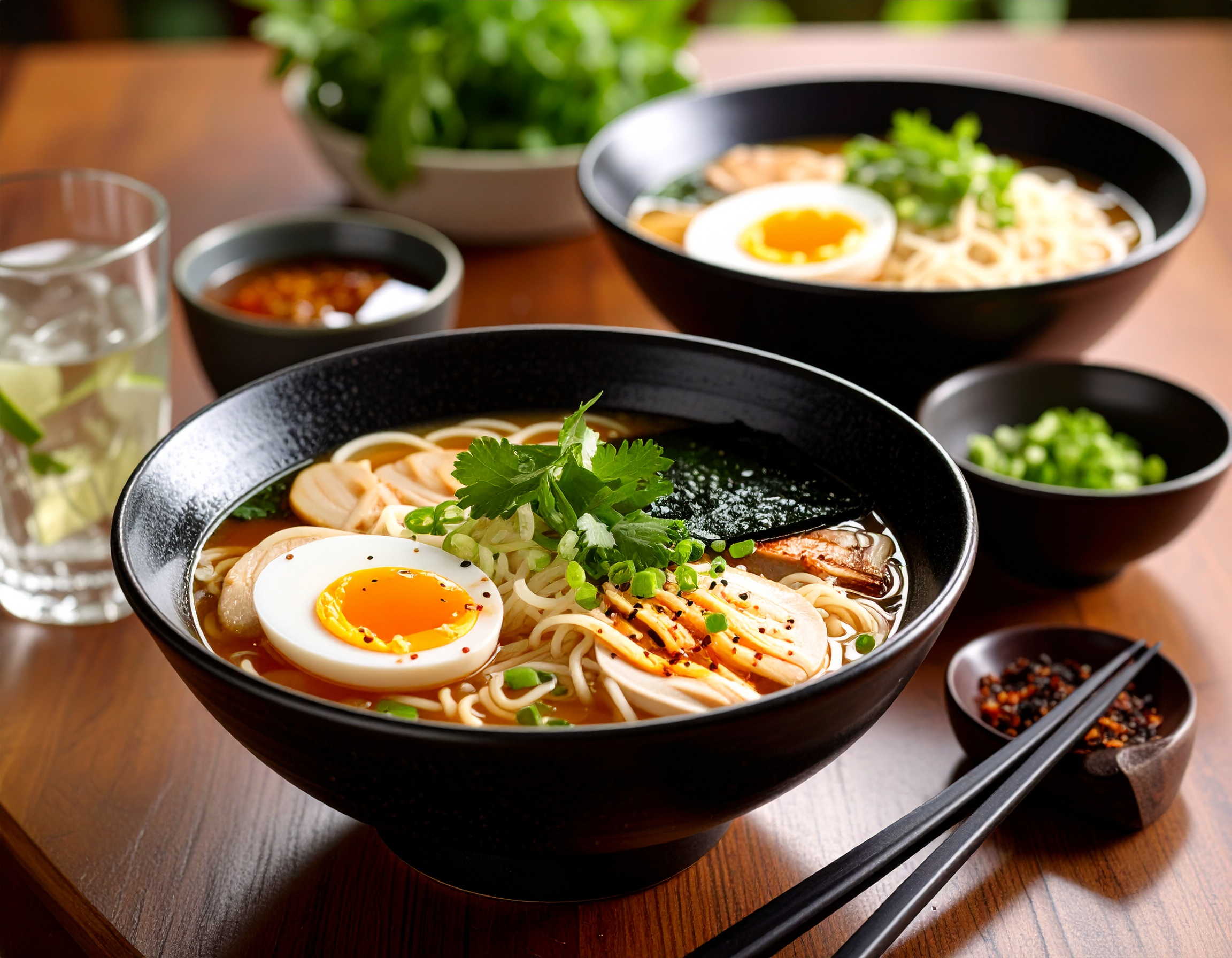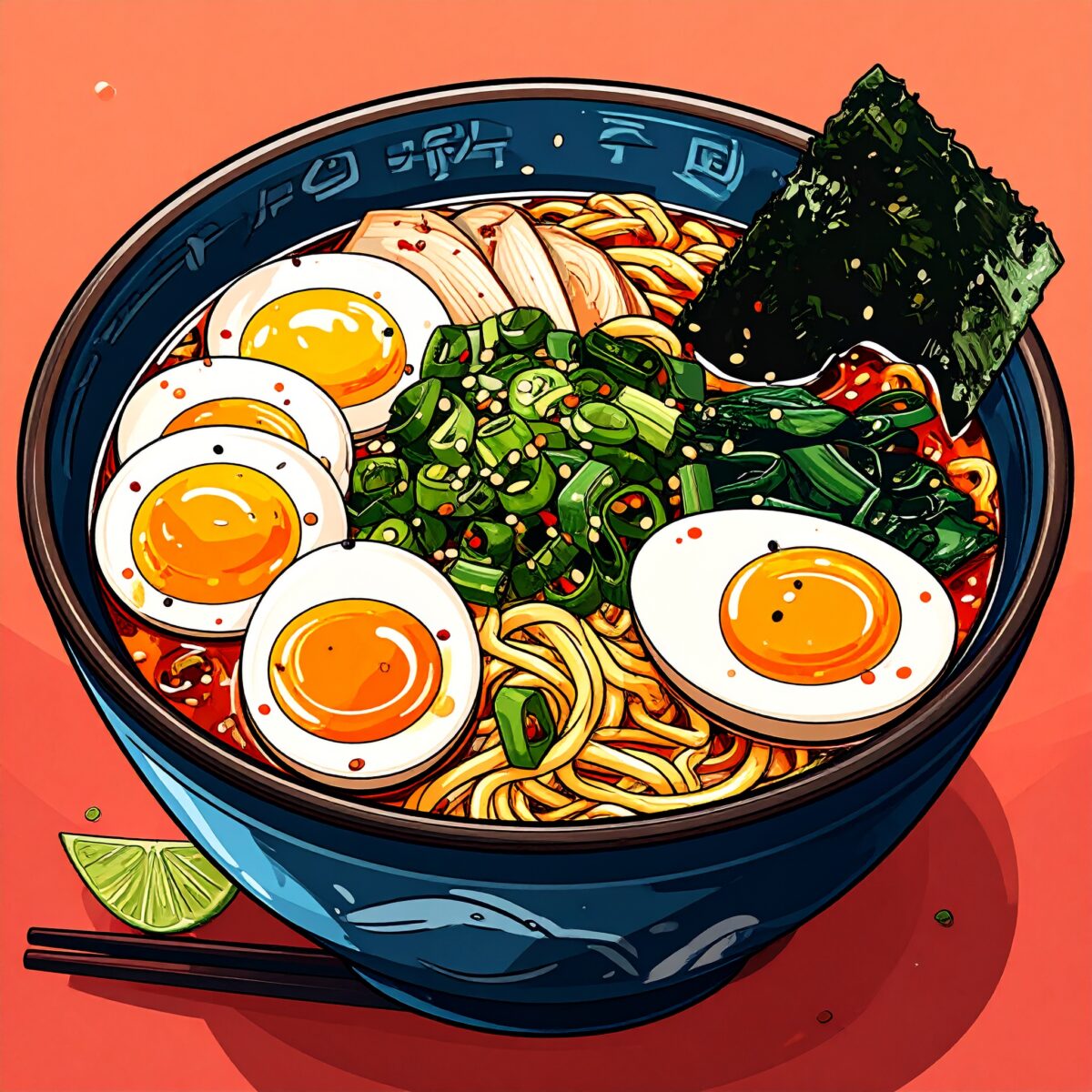As Japan’s summers become increasingly intense, “hiyashi ramen”—chilled ramen—is beginning to draw attention for its ingenuity. Traditionally, ramen conjures images of steaming broth and piping-hot noodles, but this inversion—serving the dish cold—beautifully embodies Japanese seasonal sensitivity and culinary adaptability.
This article delves into the allure of chilled ramen, its evolving varieties, cultural underpinnings, and its promising potential as a refined summer culinary experience.
The Origins and Evolution of Chilled Ramen
The story of hiyashi ramen began in Yamagata Prefecture during the 1950s. One ramen shop, struggling with a steep decline in summer orders, dared to defy tradition. They chilled their noodles with ice water, poured over a cold broth, and topped them with seasonal vegetables like cucumber and tomato—light, refreshing, yet undeniably flavorful.
The concept quickly spread across Japan under the name hiyashi chūka—literally “cold Chinese noodles.” It took shape as a summer staple: tangy dressings paired with colorful toppings like ham, shredded egg, and pickled ginger. Each variation celebrated visual appeal and palate refreshment.
Hiyashi ramen, however, has evolved beyond its initial forms. Today’s iterations—complete with chilled broth—are no longer merely seasonal cold noodles; they are creative culinary statements, reflecting each restaurant’s personality.
A Celebration of Flavor Diversity and Culinary Precision
Chilled ramen captivates the senses through its coolness and lively mouthfeel. In contrast to hot broths, chilled soups allow fats to congeal swiftly—enhancing clarity and fragrance.
This culinary form also invites boundless creativity. Traditional Japanese broths—crafted from kombu, dried sardines, or shiitake—take on new nuances when served cold, revealing deeper dashi notes. Meanwhile, westerly interpretations—like chilled tomato and basil soups—are emerging, offering refreshingly elegant twists on ramen this summer.
In the realm of chilled ramen, the subtleties of noodle preparation become paramount. Careful boiling followed by rapid cooling in icy water accentuates the noodles’ firmness and resilience, yielding a texture that is both toothsome and satisfying.
Toppings, too, are thoughtfully curated to emphasize seasonal freshness. Chilled slices of char siu, yuzu kosho, shiso leaves, and myoga not only enhance the aromatic profile but also visually echo the dish’s cooling intent—delivering a culinary composition that is as refreshing to the eyes as it is to the palate.
A Culture Uniquely Japanese: Embracing the Elegance of the Four Seasons
In Japan, enjoying chilled ramen in summer goes beyond seeking relief from heat. It represents an extension of a deeply rooted culinary tradition that embraces and celebrates the changing seasons.
In spring, bamboo shoots and mountain vegetables; in autumn, mushrooms and hearty root crops; in winter, hot pots and oden—Japan’s seasonal dining customs reflect a lifestyle deeply attuned to the rhythms of nature. This thoughtful approach to food, rooted in coexistence with the environment, is a hallmark of refined living and cultural sensitivity.
Hiyashi ramen applies this seasonal sensitivity to the beloved national dish, delivering “a summer-only special ramen” that meets the refined expectations of consumers seeking a taste of the season. For ramen shops, seasonal specialty menus like chilled ramen aren’t just about taste—they’re effective marketing tools that drive repeat visits and deepen customer engagement by offering something exclusive and timely.

Inbound Tourism and Hiyashi Ramen
Many foreign visitors to Japan are pleasantly surprised—and quickly enamored—when they discover hiyashi ramen. For those from regions where ramen is synonymous with steaming bowls, this refreshing departure offers an unexpected culinary delight with striking visual appeal that’s perfect for social media.
In response to diverse visitor needs, many ramen shops in tourist hubs now feature English menus, vegan options, and gluten‑free chilled ramen. With this thoughtful multicultural approach, hiyashi ramen is poised to become a broader summer phenomenon, inviting travelers to experience Japan’s unique blend of tradition and innovation.
Summary: Chilled Ramen as the Art of Seasonal Eating
Chilled ramen isn’t just a passing craze—it embodies the refined artistry of Japanese culture, deeply rooted in shun (seasonality) and aesthetic sensibility.
Crafting a bowl of ramen tailored to summer’s heat, humidity, and seasonal produce showcases chefs’ technical mastery and creative vision. For diners, it’s a luxurious pleasure to savor a flavor that exists only in this moment.
If you’ve always associated summer with hiyashi chūka, it’s time to experience chilled ramen—a symbolic expression of Japan’s seasonal ethos and evolving gourmet culture.




